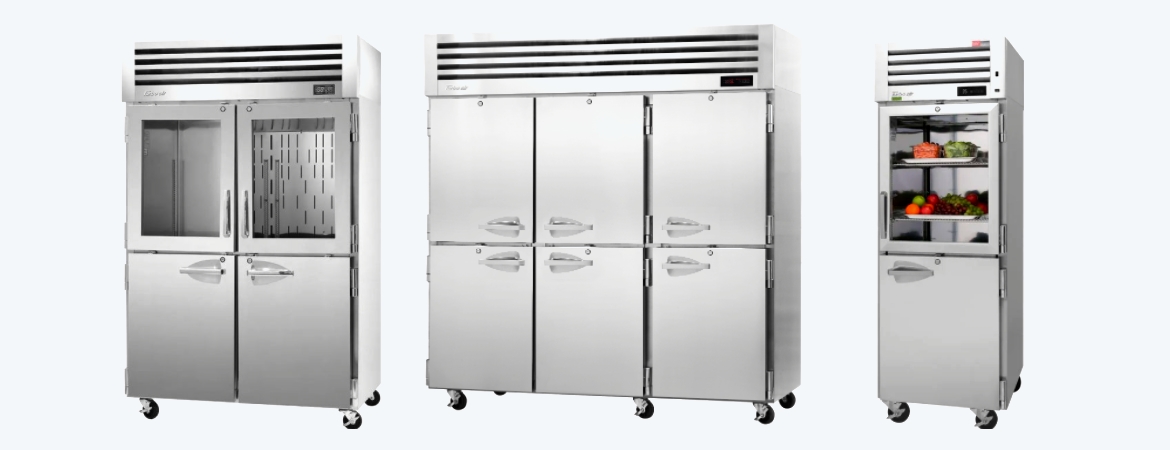Commercial Turbo Air Refrigerator Not Cooling Well

hen your Commercial Turbo Air Refrigerator isn’t cooling properly, there are several potential causes to consider.
- Exposure to Heat Sources: If the refrigerator is placed in direct sunlight or near a heater, it can struggle to maintain optimal cooling temperatures.
- Hot Food Storage: Introducing hot food directly into the refrigerator can significantly raise its internal temperature, leading to poor cooling performance until the unit adjusts.
- Overloaded Refrigerator: If the refrigerator is overloaded with food items, airflow within the unit can be restricted, impeding proper cooling circulation.
- Frequent Door Opening: Continuously opening and closing the refrigerator door can disrupt the internal temperature, making it harder for the unit to maintain consistent cooling conditions.
- Incorrect Temperature Setting: If the temperature control dial is set too warm, it can hinder the refrigerator’s ability to cool effectively, resulting in inadequate cooling.
- Clogged Condenser: A clogged condenser can prevent efficient heat dissipation, causing the refrigerator to struggle with maintaining proper cooling temperatures.
Diagnosis:
Assess whether the refrigerator is exposed to direct sunlight or positioned near heat-emitting appliances, as this can impact its cooling efficiency. Examine whether hot or warm food is being stored directly into the refrigerator, which can elevate its internal temperature and hinder cooling. Evaluate the contents of the refrigerator to ensure that it’s not overly packed with food items, which can obstruct airflow and impede cooling. Monitor how frequently the refrigerator door is being opened and closed, as excessive door openings can disrupt the internal temperature and affect cooling performance. Check the temperature control dial to ensure it’s set to the appropriate cooling level for the refrigerator’s contents and ambient conditions. Examine the condenser for any signs of debris accumulation or blockages that may be inhibiting airflow and impeding cooling.
DIY Solutions:
Here are some steps you can take to address the issue and improve the refrigerator’s cooling performance:
Move the refrigerator to a cooler location away from direct sunlight and heat sources to help it maintain optimal cooling temperatures more efficiently. Let hot or warm food cool to room temperature before placing it in the refrigerator to prevent excessive temperature fluctuations and aid in maintaining consistent cooling conditions. Remove any excess food items from the refrigerator to allow for better airflow circulation and improve cooling efficiency. Encourage users to minimize the frequency of opening and closing the refrigerator door to help maintain stable internal temperatures and enhance cooling performance. Adjust the temperature control dial to a cooler setting if necessary, ensuring that it’s appropriately calibrated for the refrigerator’s contents and operating environment. Regularly clean the condenser to remove any debris or blockages that may be impeding airflow and hindering cooling performance.
By addressing these potential causes and implementing the suggested solutions, you can help improve the cooling performance of your Commercial Turbo Air Refrigerator. If issues persist despite these efforts, it may be necessary to seek professional assistance to diagnose and resolve the problem effectively.